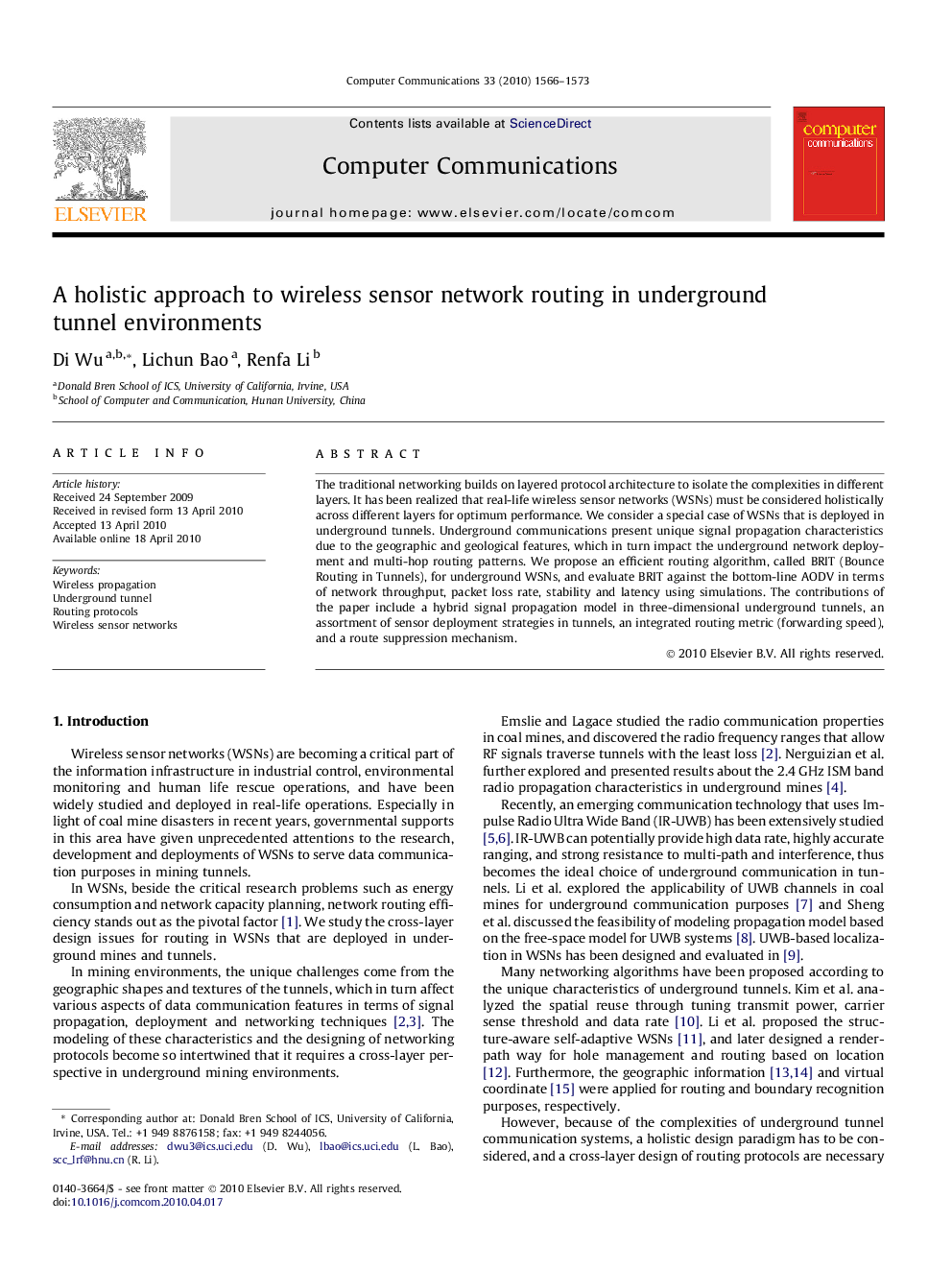| Article ID | Journal | Published Year | Pages | File Type |
|---|---|---|---|---|
| 450160 | Computer Communications | 2010 | 8 Pages |
The traditional networking builds on layered protocol architecture to isolate the complexities in different layers. It has been realized that real-life wireless sensor networks (WSNs) must be considered holistically across different layers for optimum performance. We consider a special case of WSNs that is deployed in underground tunnels. Underground communications present unique signal propagation characteristics due to the geographic and geological features, which in turn impact the underground network deployment and multi-hop routing patterns. We propose an efficient routing algorithm, called BRIT (Bounce Routing in Tunnels), for underground WSNs, and evaluate BRIT against the bottom-line AODV in terms of network throughput, packet loss rate, stability and latency using simulations. The contributions of the paper include a hybrid signal propagation model in three-dimensional underground tunnels, an assortment of sensor deployment strategies in tunnels, an integrated routing metric (forwarding speed), and a route suppression mechanism.
